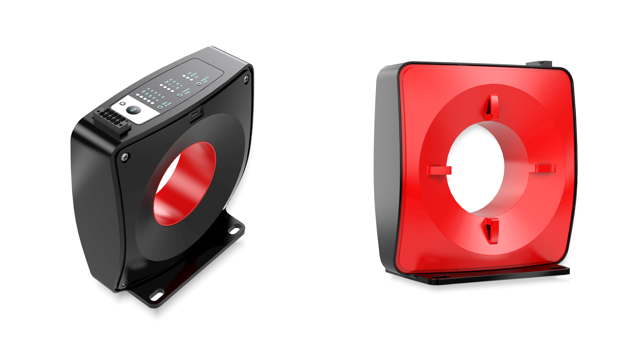Application example
Residual current monitoring of a production machine with different speed-controlled motors
Today, the speed-controlled three-phase motor is a standard element in all automated process systems and commercial buildings. Highly efficient asynchronous motors, but especially motor technologies such as permanent magnet motors, EC motors and synchronous reluctance motors, require control via frequency converters; for many motor types, direct operation via a 3-phase standard power supply is even no longer possible at all.
This development is contrasted by decades of safety guidelines designed to guarantee personal, fire and plant protection. For example, periodic inspection of low-voltage installations must be performed in accordance with IEC 60364-6 (Edition 2.0 2016-04). Section 6.5.1.2 requires, among other things, a check of the insulation resistance, in which a test voltage is applied between the respective conductor and the PE protection potential. Many manufacturers of frequency converters explicitly prohibit this test on their devices. Therefore, the frequency converter must be disconnected during this measurement to prevent possible damage. IEC 60364-6 also offers us a way out under point 6.5.1.2. Here explains the standard:
"Where a circuit is permanently monitored by an RCM in accordance with IEC 62020 ... it is not necessary to measure the insulation resistance if the function of the ... RCM is correct."
IEC 62020, which is mentioned in connection with the SCT5xxx, describes the technical boundary conditions that a differential current monitor must fulfill in order to be recognized as a complete substitute for conventional insulation resistance measurement.
 Fig.24: Beckhoff SCT5 series
Fig.24: Beckhoff SCT5 seriesAn increase in the measured levels with the residual current monitor may indicate a fault in the insulation of the system. A subsequent check of the plant can then be timed to avoid an uncontrolled shutdown of the plant and an unintentional interruption of the production processes. In contrast to conventional insulation measurement, the system is monitored seamlessly by differential current monitoring and faults in the insulation can be detected immediately.
It is therefore a procedure that can be classified as a predictive maintenance solution. When commissioning a differential current monitor, a number of boundary conditions must often be observed to ensure correct functioning.
Due to the use of frequency converters in production machines, in the vast majority of cases a system-related leakage current is present, which can cause problems for the commercially available Residual Current Protective Devices (RCDs). While residual currents mostly consist of a high ohmic component, the system-related leakage currents are mainly capacitive. However, the RCD cannot distinguish between the different leakage currents. Therefore, it can already trip when the sum of all system-related leakage currents is above the tripping threshold. This is also possible during normal operation.
 Fig.25: Electrical equivalent circuit diagram of a speed-controlled motor
Fig.25: Electrical equivalent circuit diagram of a speed-controlled motorAs shown in the figure, different frequency components can occur in the differential current from DC up to several kHz. When analyzing the measured differential current, the system-related differential current must always be considered as well, because this is present despite perfect insulation and cannot be technically separated. Also, due to inductances (e.g. motor), high current peaks can be generated during the switch-on processes, which can lead to relay tripping at the RCDs and RCMs.
In general, the different frequency components can be interpreted as follows:
Frequency | Typical causes |
|---|---|
50 Hz | Power supply, mains filter (low-pass), interference suppression capacitors |
50 Hz + 150 Hz | Single-phase frequency converter with internal EMC filter |
150 - 1050 Hz | Three-phase frequency converter with internal EMC filter |
2k - 50k Hz | Long shielded motor cable |
50k - 150k Hz | Insufficient EMC filter |
2k - 150k Hz | Long shielded motor cable + insufficient EMC filter |
When commissioning a differential current monitor, it is important to know the actual system-related leakage current. Only in this way can appropriate warning thresholds and relay tripping thresholds be sensibly set.